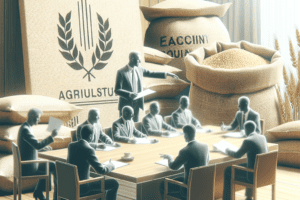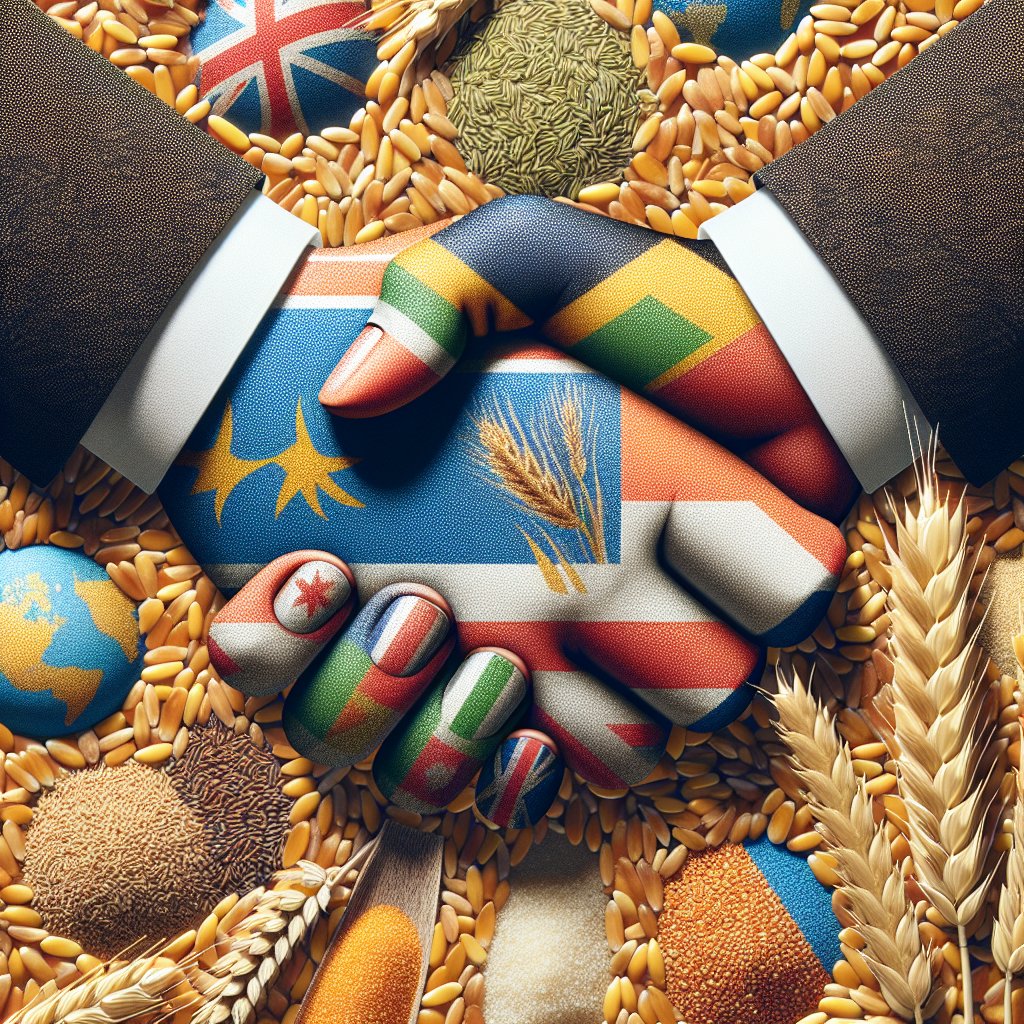The impact of GMO grains on global trade is a multifaceted issue that has sparked intense debate among policymakers, farmers, and consumers alike. Genetically modified organisms (GMOs) have revolutionized agricultural practices, offering potential benefits such as increased yield, pest resistance, and reduced reliance on chemical pesticides. However, the introduction of GMO grains into the market has also raised concerns regarding environmental sustainability, food safety, and economic implications for farmers and countries that either embrace or reject these technologies. This article delves into the various dimensions of GMO grains and their influence on global trade dynamics.
Understanding GMO Grains
GMO grains are crops that have been genetically engineered to exhibit specific traits that enhance their growth, resilience, and productivity. The most common GMO grains include corn, soybeans, and cotton, which have been modified to resist pests, tolerate herbicides, and improve nutritional content. The development of these grains has been driven by the need to meet the growing global food demand, particularly in the face of climate change and diminishing arable land.
One of the primary advantages of GMO grains is their potential to increase agricultural productivity. For instance, genetically modified corn varieties can yield significantly more than traditional strains, allowing farmers to produce more food on the same amount of land. This increased efficiency is particularly crucial in regions where food security is a pressing concern. Additionally, GMO grains can be engineered to withstand harsh environmental conditions, such as drought or flooding, making them a viable option for farmers in vulnerable areas.
However, the use of GMO grains is not without controversy. Critics argue that the long-term effects of consuming genetically modified foods are still not fully understood, raising concerns about potential health risks. Furthermore, there are environmental worries regarding the impact of GMO crops on biodiversity and the development of pesticide-resistant pests. These concerns have led to a polarized debate over the acceptance and regulation of GMO grains in various countries.
The Role of Regulation in Global Trade
Regulation plays a crucial role in determining the acceptance and trade of GMO grains on a global scale. Different countries have adopted varying stances on GMOs, leading to a patchwork of regulations that can complicate international trade. In the European Union, for example, strict regulations and labeling requirements for GMO products have created significant barriers for imports of GMO grains. This has resulted in a preference for non-GMO grains among European consumers, influencing global market dynamics.
In contrast, countries like the United States and Brazil have embraced GMO technology, promoting its benefits for agricultural productivity and economic growth. As a result, these nations have become major exporters of GMO grains, significantly impacting global supply chains. The divergence in regulatory approaches has led to trade tensions, as countries with strict GMO regulations may impose tariffs or bans on imports from countries that produce GMO grains.
Moreover, the World Trade Organization (WTO) has been involved in mediating disputes related to GMO regulations. Cases have arisen where countries have challenged the legality of trade restrictions based on health and environmental concerns. The outcomes of these disputes can have far-reaching implications for global trade patterns and the future of GMO grains.
Economic Implications for Farmers
The economic implications of GMO grains extend beyond international trade; they also significantly affect farmers’ livelihoods. For farmers in countries that embrace GMO technology, the adoption of genetically modified crops can lead to increased yields and reduced production costs. This can enhance their competitiveness in the global market, allowing them to access new export opportunities.
However, the economic landscape is not uniform. Farmers in regions with strict regulations on GMO crops may find themselves at a disadvantage, as they are unable to leverage the benefits of these technologies. Additionally, the market for non-GMO grains has grown, driven by consumer demand for organic and non-GMO products. This shift has created a niche market that some farmers are eager to tap into, but it also requires them to navigate the complexities of certification and marketing.
Furthermore, the issue of intellectual property rights associated with GMO seeds has raised concerns among farmers. Many GMO seeds are patented, meaning that farmers must purchase new seeds each season rather than saving seeds from their harvest. This can lead to increased costs and dependency on seed companies, which some critics argue undermines farmers’ autonomy and economic stability.
Consumer Perspectives and Market Trends
Consumer attitudes towards GMO grains vary widely across different regions and demographics. In some countries, consumers are increasingly wary of genetically modified foods, driven by concerns about health, environmental sustainability, and corporate control of the food supply. This skepticism has led to a growing demand for organic and non-GMO products, prompting retailers and food manufacturers to adapt their offerings accordingly.
In contrast, other consumers may prioritize the benefits of GMO grains, such as lower prices and increased availability of food. In regions where food security is a significant concern, the advantages of GMO technology may outweigh the perceived risks. This divergence in consumer preferences has created a complex market landscape, where companies must navigate varying demands and regulatory environments.
As awareness of food sourcing and production methods continues to grow, transparency in labeling and marketing has become increasingly important. Consumers are seeking more information about the origins of their food, leading to calls for clearer labeling of GMO products. This trend has prompted some companies to voluntarily disclose GMO content, while others have opted to market their products as non-GMO to appeal to health-conscious consumers.
Future Outlook for GMO Grains and Global Trade
The future of GMO grains and their impact on global trade will likely be shaped by ongoing advancements in biotechnology, regulatory developments, and shifting consumer preferences. As research continues to explore the potential benefits and risks of GMO technology, new innovations may emerge that address some of the concerns associated with genetically modified crops.
Additionally, the global conversation around food security and sustainability is evolving. As climate change poses increasing challenges to agricultural production, the role of GMO grains in developing resilient food systems may become more prominent. Policymakers and stakeholders will need to engage in constructive dialogue to balance the benefits of GMO technology with the need for environmental protection and consumer safety.
Ultimately, the impact of GMO grains on global trade will depend on the ability of countries to navigate the complexities of regulation, consumer demand, and economic realities. As the world grapples with the challenges of feeding a growing population in a changing climate, the role of GMO grains will remain a critical topic of discussion in the agricultural and trade sectors.













